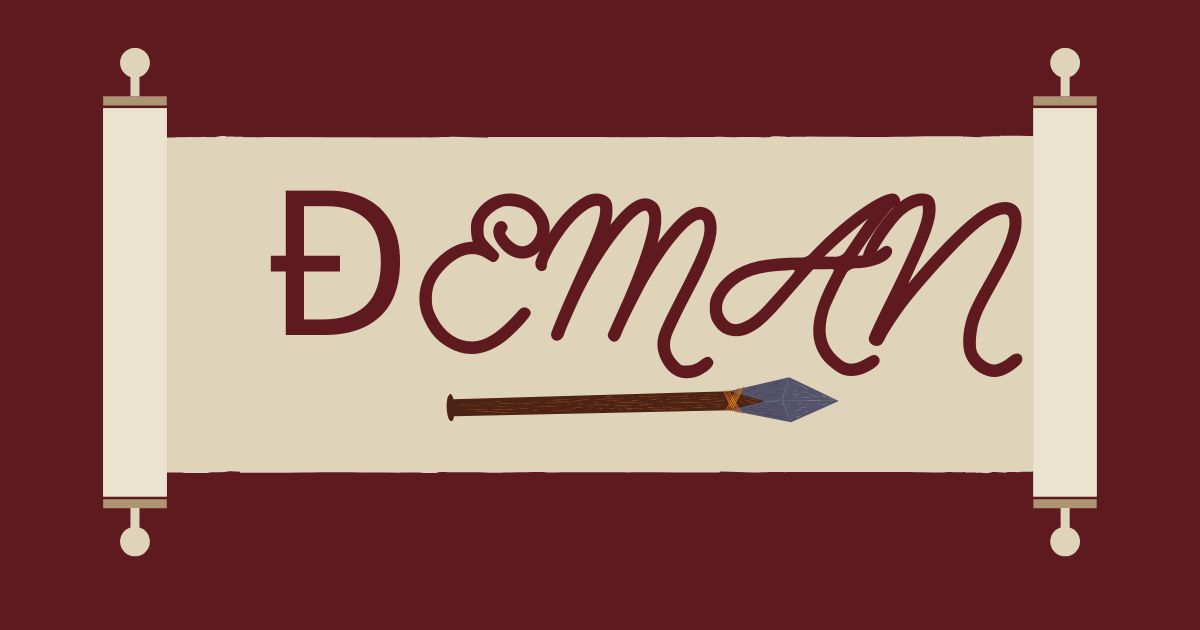In the vivid landscape of Balkan and Slavic mythology, the figure of đeman emerges as a mysterious and enigmatic being. Sometimes depicted as a demon, other times as a trickster spirit or even a fallen angel, the đeman plays a central role in regional folklore passed down through generations. These tales of đemans are both terrifying and enlightening, providing moral lessons, warnings, or spiritual metaphors that reflect the societies that crafted them.
Historical Roots of the Đeman Concept
The term “đeman” is believed to originate from the Persian and Arabic word ḏjinn, which refers to supernatural creatures capable of both good and evil. Over time, as Islamic and Persian culture blended with Slavic traditions through trade, conquest, and migration, the word morphed into a distinct concept in Balkan folklore. Unlike Western demons, who are entirely malevolent, đemans are portrayed with more nuance — sometimes destructive, sometimes wise.
Cultural Integration Across the Balkans
The đeman became a staple in the folklore of Bosnia, Serbia, Croatia, and Montenegro. In many rural communities, grandparents would tell stories of the đeman appearing at crossroads, forests, or abandoned houses, often to test the bravery, faith, or cleverness of travelers. These stories served as both cautionary tales and cultural lessons for young listeners.
Physical Descriptions and Symbolism
While the physical form of a đeman varies, it’s commonly described as a shadowy, male-shaped creature with red eyes and elongated limbs. Others portray it as a whirlwind of smoke or an animal that speaks in a human voice. These varied depictions often symbolize internal battles with morality, the temptation of sin, or the fear of the unknown.
Đeman vs Demon: Key Differences
Unlike the Western idea of a demon as an absolute evil force tied to hell and damnation, the đeman sits in a more gray area. They are more like mischievous spirits or morally ambiguous beings. While they can harm humans, especially those who stray from righteous paths, they are not agents of Satan. This distinction is vital in understanding their place in folklore — they are not evil for evil’s sake but serve a more complex narrative function.
Moral Lessons from Đeman Tales
In many stories, the đeman tests human character. One famous tale involves a đeman disguising himself as a poor traveler. Those who ignore or insult him face misfortune, while those who help him are rewarded. Such stories highlight the values of kindness, hospitality, and humility — virtues cherished by traditional societies.
Rituals and Practices to Ward Off Đemans
To protect themselves from đeman encounters, villagers developed numerous rituals. Carrying garlic, iron, or prayer beads was believed to repel đemans. Homes would have religious symbols at entrances, and bedtime prayers were recited to guard against nightly visitations. These customs reflected a blend of Islamic, Christian, and pagan practices coexisting in the region.
Đemans in Islamic Influence
As Islam spread through the Balkans, the concept of the jinn was localized into the đeman. However, Balkan Muslims didn’t see them as inherently evil — they were simply beings from another world. Some believed đemans were former humans punished for sins, while others thought they were created separately by God to coexist with humans, unseen unless provoked.
Đeman in Christian Interpretations
In Christian-majority areas, đemans were more closely associated with demonic beings. Orthodox Christian traditions often used đeman tales to reinforce religious morality. Priests would sometimes bless homes suspected of harboring đeman energy. Nevertheless, the folklore remained distinct from official doctrine, blending ancient paganism with Christian belief.
Modern Representations in Media and Pop Culture
Today, the đeman still appears in literature, movies, and urban legends across the Balkans. Horror films and novels borrow from traditional đeman lore to add authentic regional flavor. Indie games and digital art have also revived the image of the đeman, bringing ancient myths into the digital age.
Psychological Interpretation of the Đeman Archetype
From a psychological perspective, the đeman can be seen as a projection of inner fears, anxieties, and the shadow self. Carl Jung’s theory of the shadow — the unconscious part of the personality — aligns with the way đemans reveal hidden truths or test character. They are mirrors, reflecting what lies beneath our surface.
Đemans in Dreams and Nightmares
It is not uncommon for people to report dreaming of shadowy figures they later associate with đemans. These dreams are often intense and symbolic, representing moral confusion, suppressed guilt, or fear of consequences. Folklorists and psychologists alike study these dream motifs to understand how folklore seeps into the subconscious.
Đeman and the Supernatural Worldview
In the traditional worldview, the đeman is just one of many beings occupying the spiritual realm — alongside vampires, fairies, and ancestral spirits. Their inclusion in this supernatural ecosystem highlights how folklore helps societies explain the unexplainable. From sudden illness to missing livestock, đemans were sometimes blamed, providing a tangible explanation for misfortune.
Oral Storytelling and Preservation of Đeman Lore
Elders in rural communities continue to pass down đeman stories orally. While many of these tales are not written, they are performed with theatrical flair — pauses, whispers, and gestures — turning the story into a shared experience. In recent years, ethnographers have recorded and published these oral tales to preserve them for future generations.
Gender and the Đeman Figure
Interestingly, đemans are almost always male in traditional stories. This gendered portrayal may symbolize male authority, danger, or temptation — especially in tales warning young women about venturing out alone. However, recent retellings by modern authors sometimes depict female đemans, offering a twist on old norms.
Role of Đeman in Teaching Ethics and Values
Ultimately, the đeman’s role in folklore is educational. Whether warning against arrogance, preaching kindness, or testing honesty, these tales have been tools for shaping social norms. They were not just scary stories — they were moral compasses disguised as entertainment.
Conclusion
The đeman stands as a powerful symbol in Balkan folklore — not simply as a terrifying being but as a complex figure of spiritual challenge, moral instruction, and cultural continuity. From ancient whispered legends to modern retellings, the đeman continues to evolve, captivating new generations while preserving old wisdom.
FAQs
Are đemans considered evil spirits?
Not necessarily. Đemans are often morally ambiguous — capable of both good and bad depending on the situation and the human involved.
How are đemans different from demons in Western traditions?
Western demons are typically seen as entirely evil, while đemans can be tricksters, testers, or even helpful in some stories.
What is the origin of the word đeman?
It likely evolved from the Arabic word jinn, filtered through Persian and Islamic influence into Balkan culture.
Can you still find đeman stories today?
Yes, particularly in rural communities and online folklore forums, as well as in literature and films exploring regional mythology.
How do people protect themselves from đemans?
Traditional methods include religious prayers, talismans like garlic or iron, and rituals passed down through generations.











